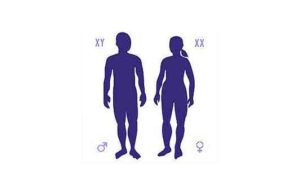 Sex chromosomes determine our biological sex: men typically have one X and one Y chromosome, while women have two Xs.
Sex chromosomes determine our biological sex: men typically have one X and one Y chromosome, while women have two Xs.
However, some men also have an extra X or Y chromosome, XXY or XYY and some women have an extra X chromosome, XXX.
Around one in 500 men could be carrying an extra X or Y chromosome putting them at increased risk of several common diseases.
Women with an extra X are one in every 1000.
MEN
In a study published in Genetics in Medicine, researchers at the Universities of Cambridge and Exeter analysed genetic data collected on over 200,000 UK men aged 40 to 70.
The data was collected from UK Biobank, a biomedical database and research resource containing anonymised genetic, lifestyle and health information from half a million UK participants.
Only a small minority of these men had a diagnosis of sex chromosome abnormality on their medical records or by self-report.
Fewer than one in four (23%) men with XXY and only one of the 143 XYY men (0.7%) had a known diagnosis.
Men with extra X chromosomes are sometimes identified during investigations of delayed puberty and infertility; however, most are unaware that they have this condition.
By linking genetic data to routine health records, the team found that men with XXY have much higher chances of reproductive problems, a three-fold higher risk of delayed puberty and a four-fold higher risk of being childless.
These men also had significantly lower blood concentrations of testosterone, the natural male hormone.
Men with an extra Y chromosome tend to be taller as boys and adults, but otherwise they have no distinctive physical features.
Men with XYY appeared to have a normal reproductive function.
Men with either XXY or XYY had higher risks of several other health conditions.
They were:
. three times more likely to have type two diabetes
. six times more likely to develop venous thrombosis
. three times as likely to experience pulmonary embolism
. four times more likely to suffer from chronic obstructive pulmonary disease.
The researchers say that it isn’t clear why an extra chromosome should increase the risk or why the risks were so similar irrespective of which sex chromosome was duplicated.
WOMEN
Previous studies have found that around one in 1,000 females has an additional X chromosome.
XXX girls have a lower mean birth weight and a smaller head circumference.
The physical phenotype shows earlier growth and longer legs.
The behavioural phenotype often shows auditory processing disorders, disorders in language development and problems in forming stable interpersonal relationships.
Psychiatric disorders seem to be more common in triple X syndrome.
Quality of life seems to increase after leaving school.
The youngest girls show accelerated growth until puberty.
EEG abnormalities seem to be rather common.
Many girls show motor-coordination problems and auditory-processing disorders are not rare.
Scoliosis is probably more common in adolescent cases.
The IQ levels are 20 points below that of controls, and verbal IQ is lowest.
The girls struggle with low self-esteem and they need psychological, behavioural and educational support.
They perform best in stable families.
After leaving school they seem to feel better.
In adults, premature ovarian failure seems to be more prevalent than in controls.
MRIs of the brain seem to show decreased brain volumes.
Psychotic illness seems to be more prevalent in triple X adult women than in controls. Psychotic disorders respond well to psychotropic drugs.
Triple X adults suffer more frequently from cyclothymic and labile personality traits.
For more information
Genetics in Medicine
Available online 9 June 2022
Detection and characterization of male sex chromosome abnormalities in the UK Biobank study
Link…
European Journal of
Human Genetics
Triple X syndrome: a review of the literature
Link…
MDN
This post is also available in:
 Italian
Italian


